RED-FLOWERING CURRANT
(Ribes sanguineum)
Other common names: The flowering currant, redflower currant, or red currant
Kingdom: Plantae – Plants
Subkingdom: Tracheobionta – Vascular plants
Superdivision: Spermatophyta – Seed plants
Division: Magnoliophyta – Flowering plants
Class: Magnoliopsida – Dicotyledons
Subclass: Rosidae
Order: Rosales
Family: Grossulariaceae – Currant family
Genus: Ribes L. – currant
Species: Ribes sanguineum Pursh – redflower currant
Requiring little care, this native shrub can grow up to 10 feet tall with thornless stems and thrives in partial shade to full sun. The leaves are about 1-2 inches long and begin to emerge in early spring, along with long nodding clusters that produce light to dark rose (rarely white) flowers. Each flower is less than 0.5 inch long and has 5 petals. Dark purple berries are produced in early to mid-summer.
Red-flowering currant is beneficial to many wildlife species. Hummingbirds and butterflies use the early spring nectar; leaves provide forage for the larvae of moths and butterflies and occasional browse for deer and elk. Branches provide nesting habitat for songbirds and cover for small mammals. Birds and small mammals also consume the berries for food. Humans use the tart berries for jams, pies, juice and syrup.

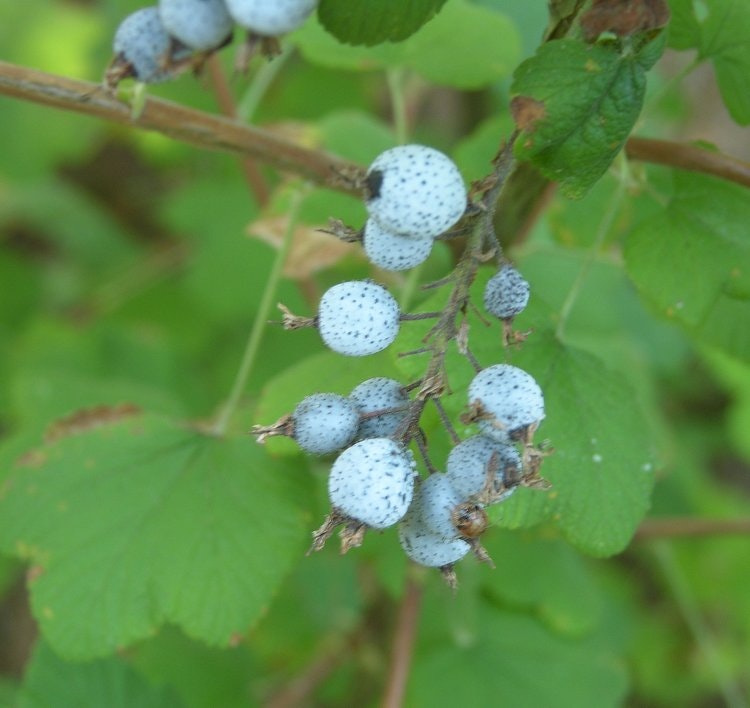

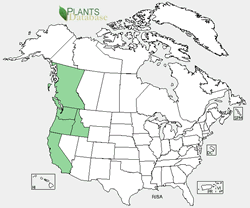
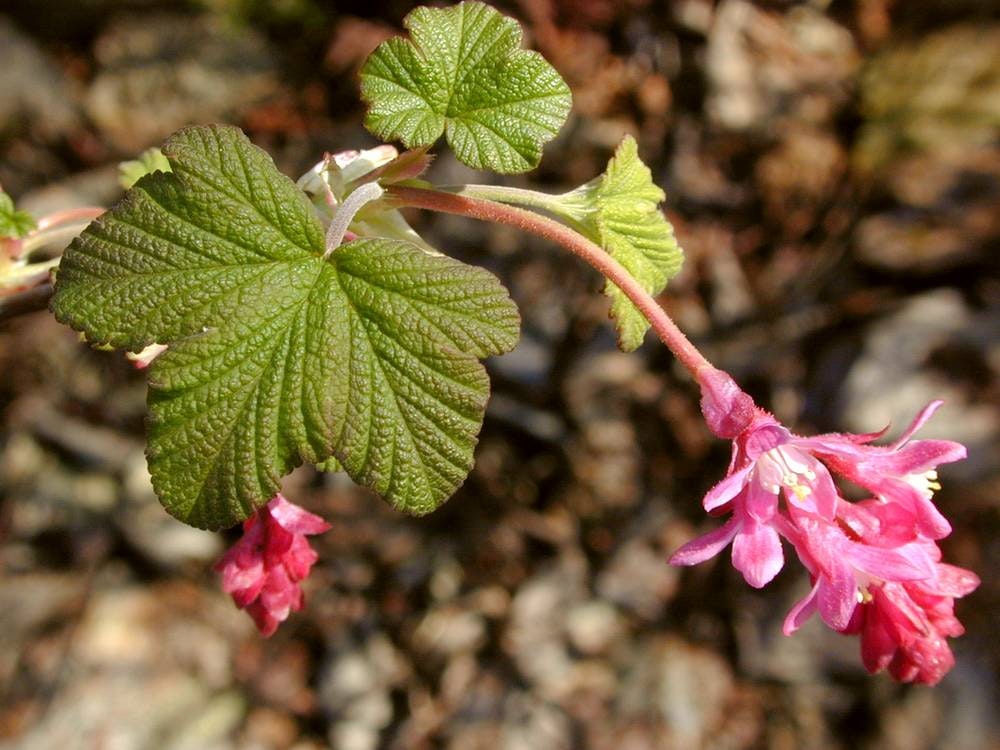



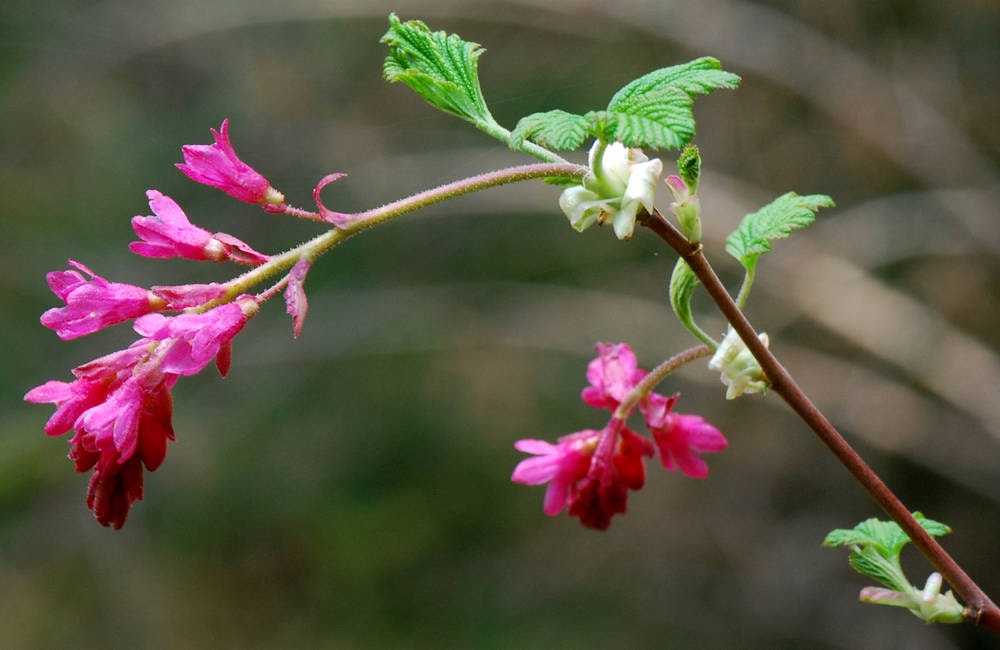


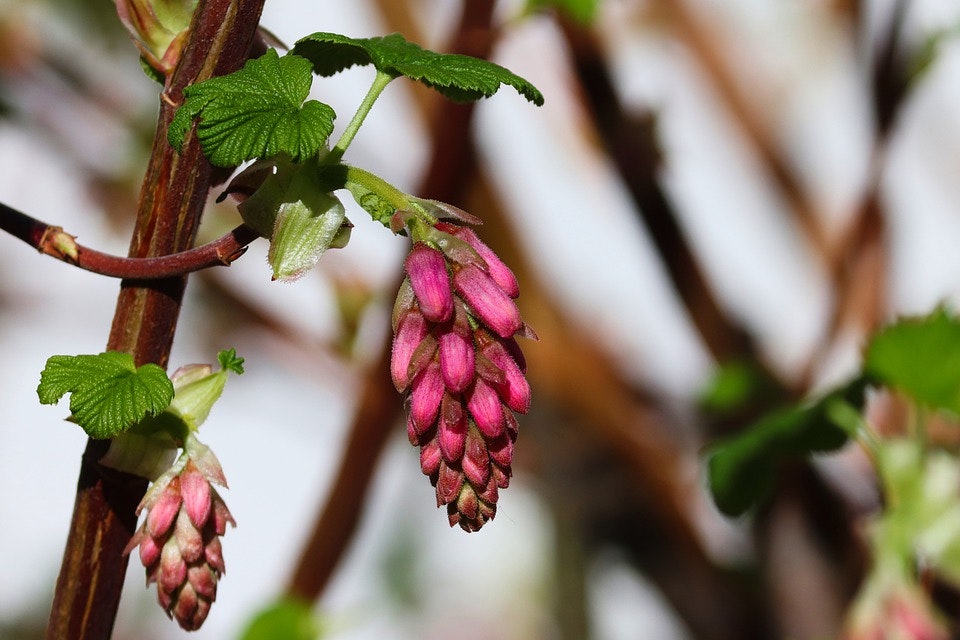
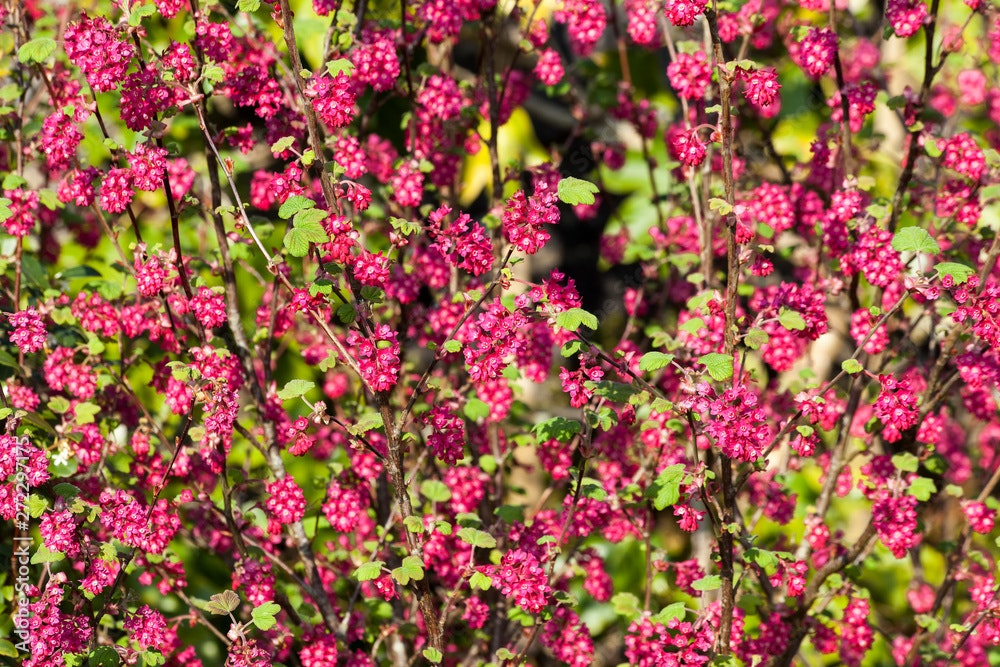

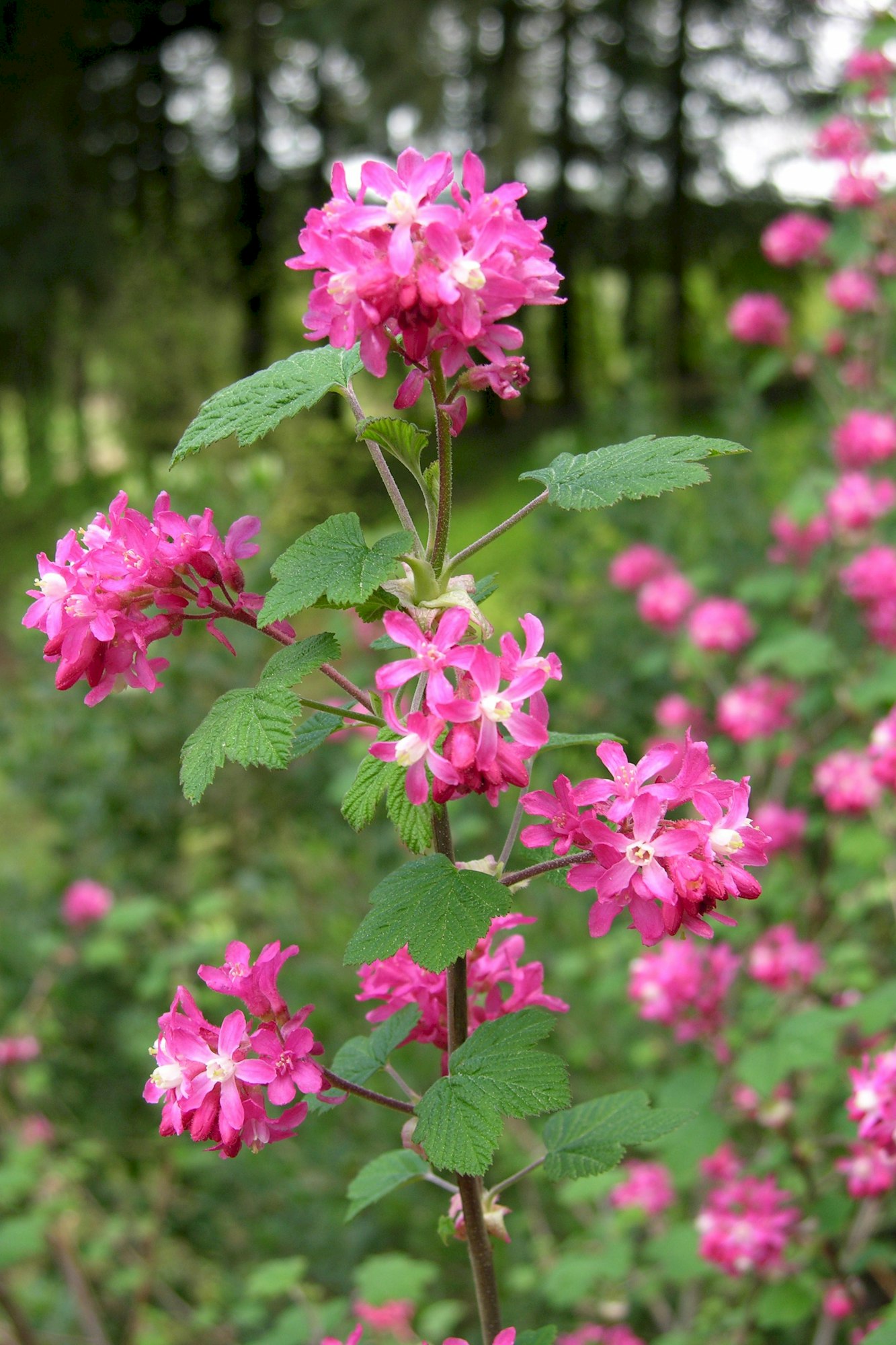
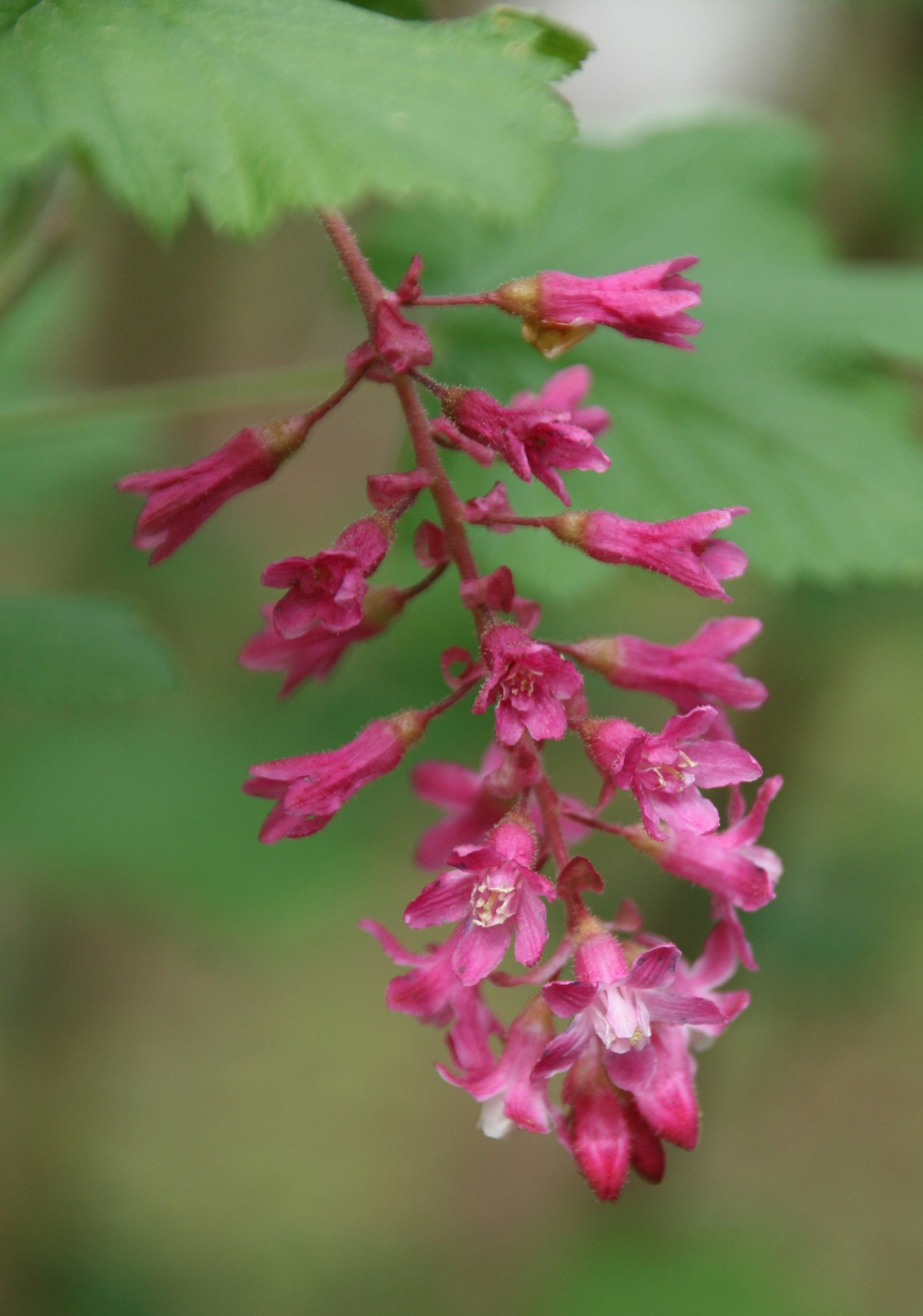

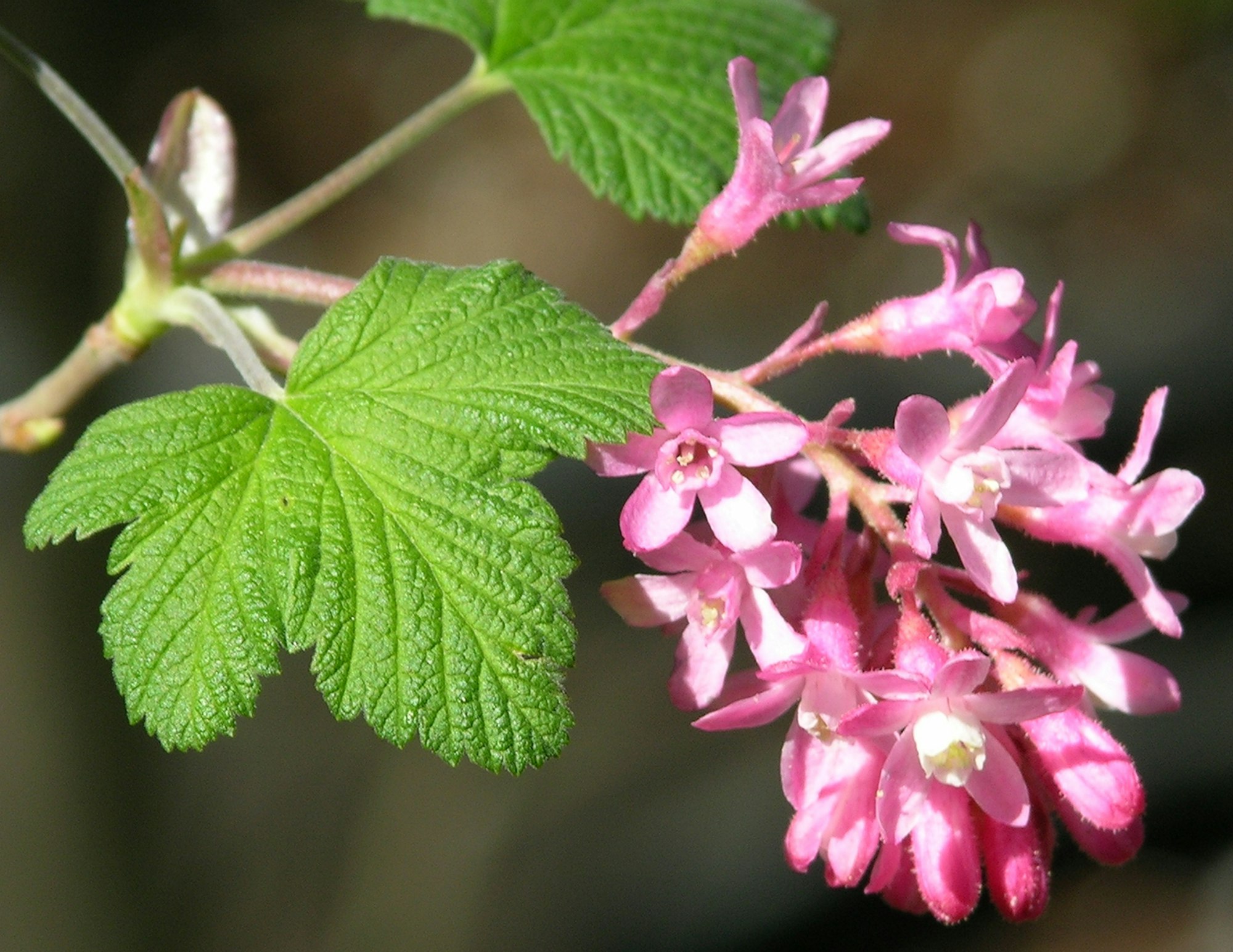
























Learn more about Red-Flowering Currant and other native plants of Oregon by visiting the USDA Forest Service site here.
